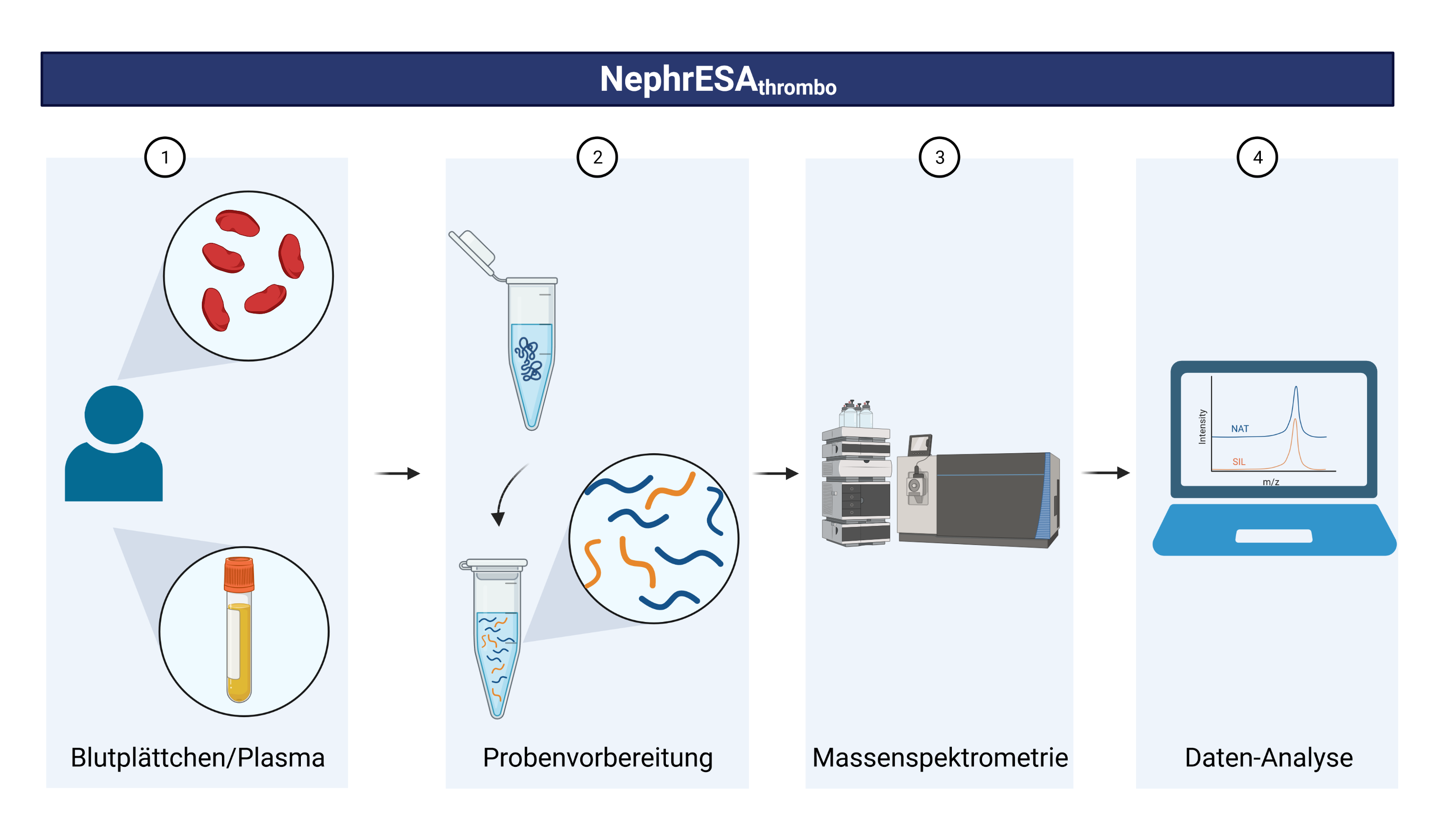SP4 - NephrESA
Submodell der Dynamik der Thrombozytenaktivierung bei CKD-Patienten
Since CKD patients often suffer from anaemia, they receive drugs from the group of Erythropoiesis-stimulating agents (ESAs). These encourage the formation of red blood cells (erythrocytes). The side effects of ESAs include an increased risk of thrombosis. In order to optimise drug therapy and better adjust it to the individual patient in the future, scientists at the Leibniz-Institut für Analytische Wissenschaften - ISAS - e.V. are investigating the risk of thrombosis.
In the case of thrombosis, the blood coagulates and blocks a vessel as a blood clot (thrombus). Certain proteins on the cell surface of the blood platelets (thrombocytes), which control their activation and thus clump together, are responsible for this process. The consequences – i.e. pulmonary embolism, stroke or heart attack – can be life threatening.
Most CKD patients suffer from anaemia and therefore receive a treatment with Epo. Depending on the degree of their disease, they have a two to three times higher risk of thrombosis than other people. The reason for this is that the activation and aggregation of the platelets are higher in these patients because of their therapy. The treatment with ESAs, which is supposed to help the patients with their kidney disease, therefore carries a risk of thrombosis.
Subproject 4 (SP 4) at ISAS focuses on the so far unexplored molecular mechanism that causes platelets to lose their balance in CKD patients. The researchers use mass spectrometry to examine blood plasma and platelets from CKD patients in order to identify markers for the early activation of blood clotting. The aim is to enable patients to receive personalised anaemia treatment with the lowest risk of thrombosis in the future.
The main objectives are:
1. Development of assays for blood plasma risk factors for thrombovascular events.
2. Development of assays for platelet activation status in CDK patients.
3. Analysis of changes in the dynamics of platelet activation in CKD patients.
4. Development a computer model (NephrESAthrombo sub-model) of thrombovascular risk for CKD patients.




